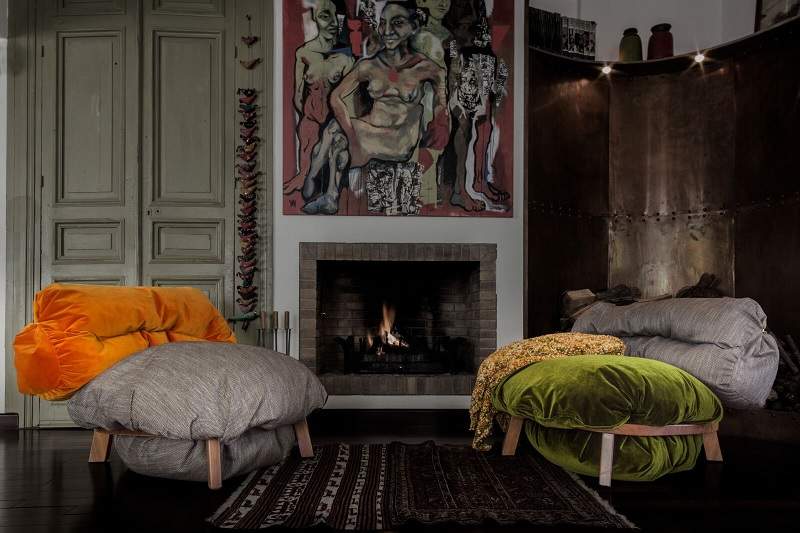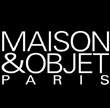
With the success of the previous editions, the Rising Talents Awards have become a major event for the worldwide design community. Organized every year by MAISON&OBJET, the event is an illustration of the fair’s ambition to be a leading platform for promoting young designers by giving them a chance to exhibit their work for an audience of international professionals.
After the UK and Italy, it is now Lebanon’s turn to present its talents during the upcoming edition held at the Parc des Expositions – Paris Nord Villepinte, from 7 to 11 September, 2018. Bridging the gap between East and West, the choice to honour a country with a booming creative scene confirms MAISON&OBJET’s effort to keep pushing the boundaries of creation. The event is placed under the patronage of Rabih Kayrouz, whose fashion label has immensely contributed to the worldwide popularity of the Lebanese style over the years.
Seven jury members
The seven personalities who have been invited to sit on the Selection Jury are all figures who contribute one way or another to the revival of the Lebanese design scene. In Paris, Aline Asmar d’Amman has recently gained a lot of attention when her architecture studio Culture in Architecture was commissioned for the renovation of Hôtel de Crillon.
The six designers use this enthusiasm to bring new energy to Lebanon’s creative scene, as each of them contributes his or her own vision to the furniture industry.
Jury member Joy Mardini explains: “Whether in terms of craft, material use or technical innovation, it is clear that Lebanese design is not static.” In fact, all specialists agree in acknowledging the wind of creativity that began sweeping across the country after the war ended, including Aline Asmar d’Amman, who wants to make something very clear: “The Lebanese feel a sense of urgency to live their lives and celebrate the mundane, they have a certain culture of pleasure and objects that tell stories.”
This joyful and very contemporary spirit inspired by the elegance of tradition has not gone undetected by Nadine Fares Kahil and Maria Ziadeh:
Hala Mubarak is very familiar with the local design community, as she is the brain behind the first Beirut Design Fair held last year, as is Joy Mardini, who has been running her own design gallery in Beirut. As for Marc Baroud, he is an experienced designer, known, among other reasons, for having established and chaired the Design Department at the Lebanese Academy of Fine Arts, while Cherine Magrabi founded Lebanese design platform House of Today. Lastly, Nadine Fares Kahil is the editor-in-chief of Curve magazine, and Maria Ziadeh commercial director for Elle and Elle Decoration (Liban).
A multicultural artisanal heritage
If design is currently booming in Lebanon, it is because design as a discipline was only introduced very recently in the country, when designers like Nada Debs, Karen Chekerdjian or Karim Chaya returned to their home country in the late 90s. Usually educated abroad and fluent in several languages, this first generation of Lebanese designers has found success in a context that is very specific and unique to Lebanon – a melting pot of languages and religions. As Marc Baroud puts it: “The essential characteristic of design in Lebanon is the multiplicity of its influences. There is no cultural standard, no industrial heritage, and therefore no ‘ideology’ on function, whether formalized or otherwise. It is a great liberty, which is very exciting.”
Unconstrained by the weight of industrial tradition, designers have however been able to rely on an immense wealth of artisanal crafts, for which Hala Mubarak has immense respect: “Ancestral crafts that have been passed on through generations giving life to contemporary designs have put the Lebanese creative community in the spotlight. Refined aesthetics, clean lines and a taste for noble materials are the main features that have allowed Lebanese design to start forming an identity.”
Six emerging designers
Carlo Massoud, Marc Dibeh, Carla Baz, Anastasia Nysten, Caramel Studio and Paola Sakr: these are the names who have been chosen by the members of the Rising Talents Awards Jury to represent the future of Lebanese design. A new generation that have followed in their elders’ footsteps by putting their international experience to the service of local, usually little-known manufacturing techniques. Encouraged by a network of very vocal galleries and trade events, this capacity for bold initiatives is praised by Cherine Magrabi: “This new generation shares one common trait: optimism. At a time when Lebanon is facing grim prospects and facing challenges to solve its problems, these young designers produce pieces that express happiness. From their offices in Beirut, they share their hope to overcome the clichés that the rest of the world has imposed on the country.”

